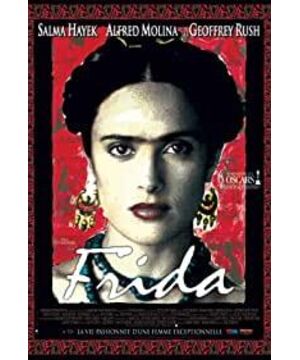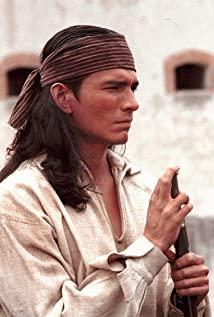It was a summer when I came across a book that changed my life, a heavy magazine booklet. Every time I open it with excitement and eagerness, I read it slowly and with gusto. Chew each word carefully, and carefully capture every detail in the picture with your eyes. That's when I first learned about Guangling San, first dreamed of becoming a columnist, and first... met her.
Frida, a Mexican female painter with a straight eyebrow.
She suffered from polio when she was 6 years old, causing her right leg to atrophy. When she was 18, the bus she was riding in collided with a tram. It caused her spine, collarbone, ribs to break, and her pelvis to break in three places. The metal rod entered the right side of her body, penetrated her abdomen, and came out of her genitals. There were 11 fractures in the right foot, and the entire sole of the foot was comminuted.
No one cared whether she could still walk, because survival was the most important issue at the time.
Later, after undergoing 33 operations, large and small, she miraculously survived, but the pain followed her, and she was barren for life. In her misery, she used painting to distract her. Her father bought her pen and paper. Her mother placed a mirror by her bedside, and she began to paint self-portraits through the mirror.
Because of her painting, she was in frequent contact with her then big and fat teacher, the famous muralist Diego Rivera. The two got married in 1929, but throughout their marriage there was love, affair, creative cooperation and hatred, and eventually, they divorced in 1940. Although Rivera had affairs with many women, even with Frida's sister, he remained her biggest admirer.
After that, Frida had many unclear emotional experiences, and she seduced everyone she liked, including the Communist leader Leon Trotsky, and even women.
There were various rumors about her, but what struck me at the time was the fear I felt as a peer, and I couldn't imagine the pain she was going through. It was at that moment that the ignorant me for the first time truly felt an instinctive burst of consciousness that desperately wanted to cherish life, which shocked myself.
When I first listened to the story, I thought that all her choices after that would only be self-deprecation. However, in her life, there are paintings, colors, and a man who loves and kills her. All of this is so alive and autonomous. In such a colorful world where she lives, what are the scars of the body? Her soul is what makes people amazingly envious.
If you can fly, what are you going to do with your feet?
Besides, it's her work.
Her paintings are so bright and eye-catching. I don't know whether it's because of the color or the strange transformation of suffering in the paintings. It seems that people's hearts have been severely hammered. Breathless as if forced.
When I first rewarded it, I thought it was optimistic; when I looked at it again, I felt strange; now I deeply understand the suffering and bitterness of life.
When you see her color and become infected, at that moment, you truly experience "life".
After Frida's death, her home, known as Casa Azul or the Blue House, was turned into a museum. Now, the museum welcomes about 25,000 visitors a month. Ten rooms inside the museum have different themes, one of which features Carlo himself and other artists including Paul Klee, Jose Maria Velasco and Celie Artwork by Celia Calderon Orozco.
After years of being separated from that magazine, I had long since forgotten about this museum I wanted to add to my wish list, until last year when I saw the news: The most important exhibition of 2015 at the New York Botanical Garden - Frida Kahlo: Art , garden and life. Among them, part of the restoration of Carlo's studio and garden Casa Azul ("Blue House") in Coyoacan, Mexico City. Get to know her in context, with a unique perspective on Kahlo's art, self-portraits, and what now seems almost mythical life.
At that time, I wanted to write such an article to pay tribute to this female painter who once trembled my little world, and to express the overflowing emotions of my soul. It's a pity that the time is limited, and I want to do too much, so I have to delay until now.
However, it was clumsy to write anyway.
Frida said, "I never lost my passion. I paint all the time because they keep giving me dolmen, and painting enriches my days, they make me happy... I'm joking, I write, they show me movies...I have nothing to complain about."
Frida's last words after a short but intense life after her death at age 47:
"I hope my death will be pleasant. , and I hope never to come again."
View more about Frida reviews











